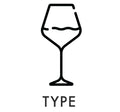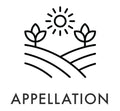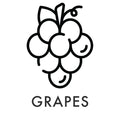William Fevre Chablis Les Preuses Grand Cru 2021 750ml










The Wine Advocate | RP 94
Published: Sep 7, 2023
The 2021 Chablis Grand Cru Les Preuses is pure and ethereal, mingling notes of citrus soil, wet stones and white flowers in a youthfully discreet bouquet. Full-bodied, satiny and suave, it's refined and glossy, with racy acids and a saline finish.
The 2020 vintage marked the first year of official organic conversion for 78-hectare Domaine William Fèvre, though it's actually the 15th year the estate has been practicing organic, so the team took the challenges of the 2021 vintage in their stride. When I asked Didier Séguier how he managed to farm such a large estate this way, when so many smaller producers balk at the challenge, he explained that part of the secret has been fully engaging the Fèvre team: everyone is trained to spot signs of mildew and disease and share them on a team WhatsApp group; there are even prizes for the most vigilant employees. The approach certainly seems to have paid off in 2021, in any case, delivering wines with an old-school aesthetic but contemporary precision and charm; and the fact that they are bottled under Diam means that their gracious evolution in the cellar is assured. While the 2021s can't quite match the sheer concentration and intensity of 2019 and 2020, their classical profiles and clear differentiation by site will delight Chablis purists. Drink Date: 2025 - 2050
Decanter | D 95
Published: Oct 17, 2022
One of the domaine's standout wines, this immediately strikes you with its precision and clarity. Fevre's vines are from two different sites, with varying expositions - one lower down and facing south-east, the other high on the plateau. Great elegance with plenty of weight and concentration on the palate, full and fleshy. Grapefruit notes to the fore but plenty of mineral/saline notes on the long, persistent finish. A delicious, aristocratic grand cru. Fevre owns 2.5ha within Les Preuses. Drinking Window: 2026 - 2038
Williamfevre.fr
DescriptionLes Preuses is probably taken from the word “Perreuse” (stone), the name given to the ancient Roman road which ran below the current vineyard. Made for ageing thanks to a dense, compact, clay-rich soil resting on a limestone bed.
Grape variety
TastingFloral nose, with fruity aromas enhanced by intense mineral notes and developing lightly smoky touches. Very round on the palate, both full-bodied and refined.
Food and wine pairingFish, shellfish and other seafood, grilled or in a cream sauce. Poultry and white meat, grilled or in a cream sauce.
HARVEST: Manual
VINIFICATION: Use of the principle of gravity so as to avoid all pumping, which could harm the quality of the wine. Brief (1½ - 2 hours) pneumatic pressing to obtain a gentle separation of the solid and liquid parts of the grape. Very light static settling of the juice to preserve enough fine lees so that the alcoholic and malolactic fermentations can occur naturally. The must is run into French oak barrels (aged of 6 years in average) for 50 to 60% of the harvest. The remainder is vinified in small stainless steel vats.
MATURING: 14 to 15 months, of which 5 to 6 months on fine lees in French oak barrels, for 50 to 60% of the harvest. The end of maturation occurs in small stainless steel vats.

